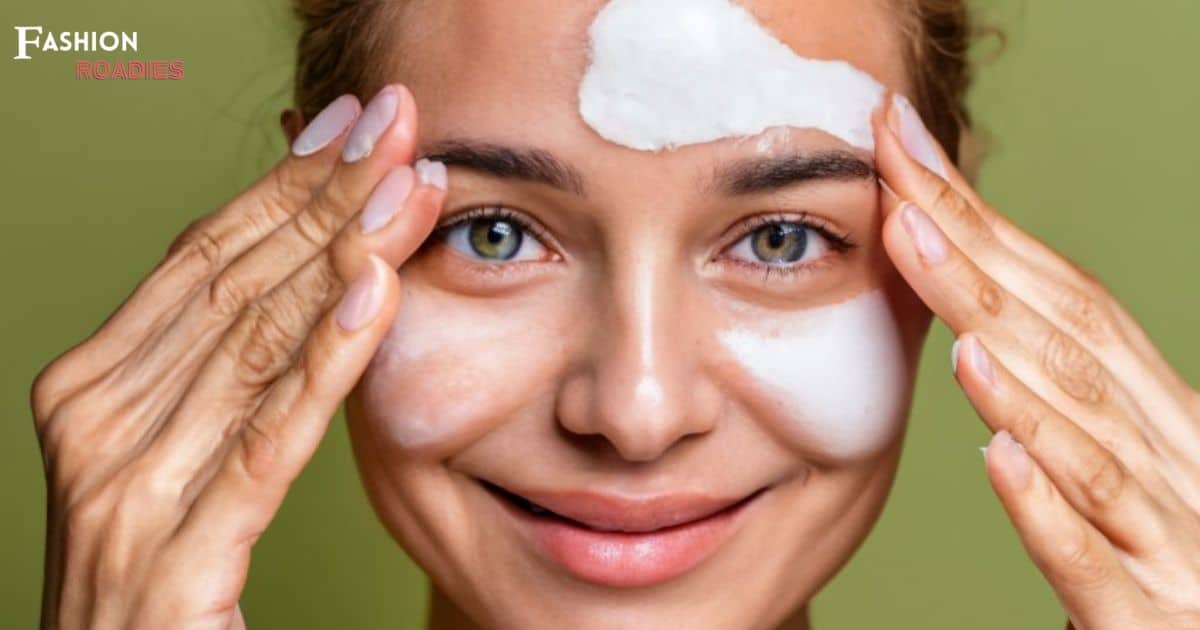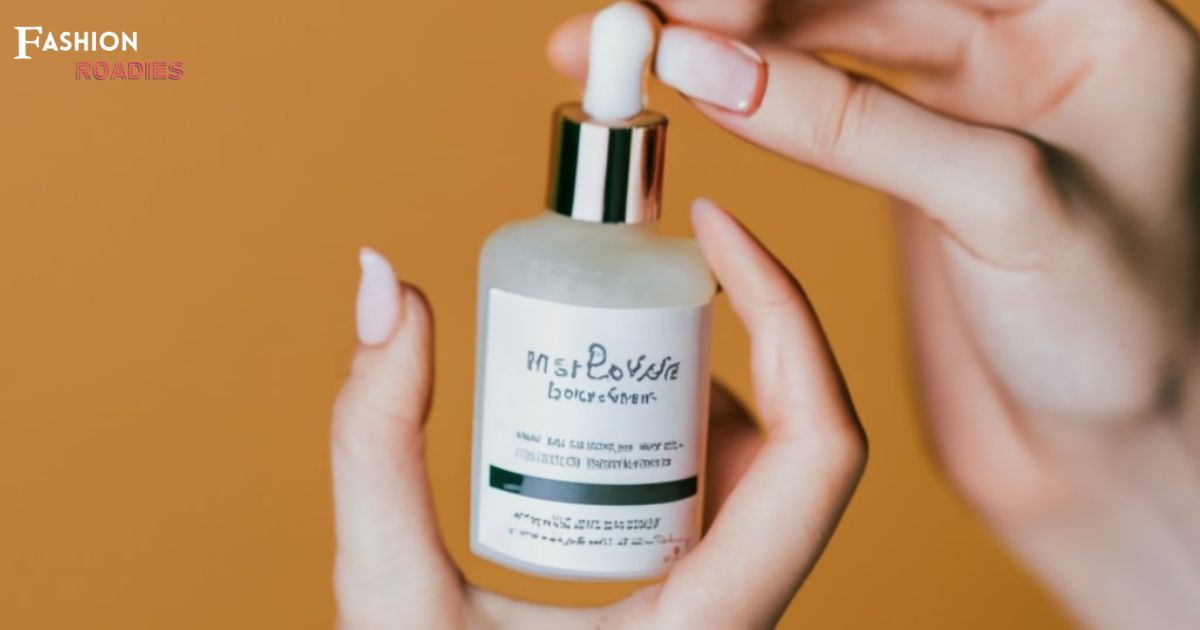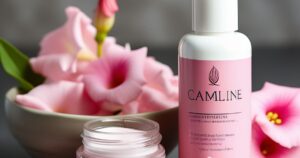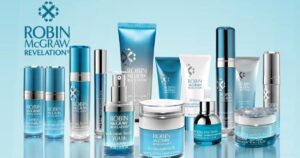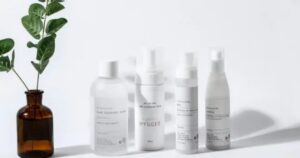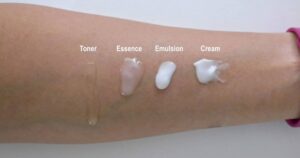In recent years, the importance of a comprehensive skincare routine has gained significant recognition among individuals seeking to enhance their skin’s health and appearance. The process of layering skincare products has emerged as an effective method to maximize the benefits of each product. With countless options available in the market, understanding how to properly layer skin care products can be overwhelming. This article aims to provide practical guidance on the step-by-step process of layering skincare products, ensuring that readers are equipped with the necessary knowledge to make informed decisions about their skincare regimen.
Key Takeaways
- Start with a gentle cleanser to prepare the skin for the skincare routine.
- Use toner or essence after cleansing to balance pH levels and provide hydration.
- Apply serums to target specific skin concerns, following the manufacturer’s instructions.
- Finish with moisturizer, face oil, and sunscreen to replenish moisture, protect the skin, and prevent sun damage.
Step 1: Start With a Gentle Cleanser of Skin Care
To begin the skin care routine, it is recommended to start with a gentle cleanser. A dermatologist or skin care specialist would provide detailed and accurate information about various skin care products, their ingredients, and how they work. They would explain the benefits and potential risks associated with each product, allowing readers to make informed decisions. The writing style of a dermatologist or skin care specialist would be formal and objective, focusing on scientific facts and research. They would use technical terms specific to the field of dermatology, ensuring that the information is credible and reliable.
In terms of practical advice for layering skin care products effectively, a dermatologist or skin care specialist would emphasize step-by-step instructions. They may suggest suitable product combinations based on different skin types or concerns. Additionally, they could address common issues or misconceptions related to layering skin care. Following these recommendations will help create an effective and personalized skincare routine.
Transition: Once the face has been thoroughly cleansed, it is time to move on to step 2: applying toner or essence.
Step 2: Apply Toner or Essence
After cleansing the face, the next step in a skincare routine involves the application of toner or essence. Toners and essences are liquid-based products that are designed to balance the skin’s pH level, remove any remaining traces of dirt or makeup, and provide hydration. These products contain various ingredients such as antioxidants, humectants, and soothing agents that offer multiple benefits for the skin. Antioxidants help protect against environmental damage and premature aging, while humectants attract moisture to the skin, improving its hydration levels. Additionally, toners and essences can enhance the absorption of subsequent skincare products by preparing the skin for optimal penetration. When layering these products, it is important to apply them onto clean skin using a cotton pad or fingertips in gentle sweeping motions. It is recommended to choose toners or essences that are suitable for your specific skin type and concerns to ensure maximum efficacy.
Step 3: Incorporate Serums
Incorporating serums into a skincare routine involves the application of concentrated formulas that target specific skin concerns. Serums are lightweight and fast-absorbing, making them ideal for delivering potent ingredients deep into the skin. These products often contain active ingredients like antioxidants, peptides, or hyaluronic acid, which can address issues such as hydration, anti-aging, brightening, or acne. When layering serums, it is important to consider the order of application based on their consistency and purpose. Generally, start with thinner serums and gradually move towards thicker ones. Allow each serum to fully absorb before applying the next one. It is also crucial to follow the instructions provided by the manufacturer for optimal results. Layering serums can enhance their efficacy and provide targeted benefits to address various skin concerns effectively.
Note: The style used in this response is objective and impersonal, focusing on providing factual information about incorporating serums into a skincare routine.
Step 4: Treat Specific Skin Concerns
Addressing specific skin concerns requires targeted treatment options that focus on individual needs and desired outcomes. When it comes to treating specific skin concerns, dermatologists or skin care specialists provide detailed and accurate information about various products, their ingredients, and how they work. They explain the benefits and potential risks associated with each product, allowing readers to make informed decisions. In a professional manner, they use technical terms and terminology specific to dermatology, ensuring that the information provided is credible and reliable. Practically speaking, dermatologists emphasize practical advice and recommendations for layering skin care products effectively. They provide step-by-step instructions and suggest suitable product combinations for different skin types or concerns while addressing common issues or misconceptions related to layering skincare.
Transition: Now that we have addressed the importance of treating specific skin concerns, let’s move on to Step 5: hydrate with a moisturizer.
Step 5: Hydrate With a Moisturizer
Step 5: Hydrate with a moisturizer to replenish the skin’s moisture barrier and improve overall hydration levels. Moisturizers play a crucial role in any skincare routine, as they provide essential hydration and help maintain the skin’s natural moisture balance. They contain ingredients such as humectants, emollients, and occlusives that work together to attract water to the skin, prevent its evaporation, and create a protective barrier. Humectants like hyaluronic acid draw moisture from the environment into the skin, while emollients like ceramides and oils help soften and smooth the skin’s surface. Occlusives like petrolatum or dimethicone seal in moisture by forming a barrier on top of the skin. When choosing a moisturizer, it is important to consider your specific skin type or concerns, as well as any potential sensitivities or allergies you may have. Look for non-comedogenic formulas that won’t clog pores if you have oily or acne-prone skin, or opt for richer textures if you have dry or mature skin. Applying moisturizer after serums or treatments can help lock in their benefits and enhance their efficacy.
Transition: Now that we’ve covered hydrating with a moisturizer let’s move on to step 6: considering adding face oil to your skincare routine.
Step 6: Consider Adding Face Oil
Consideration should be given to the addition of face oil as part of a skincare routine. Face oils are beneficial for various skin types and can provide additional hydration, nourishment, and protection to the skin. They work by creating a barrier on the skin’s surface, preventing moisture loss and enhancing the effectiveness of other skincare products. When incorporating face oil into a skincare routine, it is important to follow these steps:
- After cleansing and toning, apply a few drops of face oil onto clean hands.
- Gently massage the oil onto the face using upward motions.
- This helps stimulate blood circulation and promotes absorption of the oil.
- It also provides a relaxing self-care experience.
Using face oil can help improve skin texture, reduce dryness or flakiness, and enhance overall radiance. However, it is essential to choose an appropriate face oil that suits your specific skin type and concerns. Consult with a dermatologist or skincare specialist for personalized recommendations based on your unique needs.
Step 7: Finish With Sunscreen Protection
To ensure adequate protection against harmful UV rays, it is crucial to finish the skincare routine with the application of sunscreen. Sunscreen plays a vital role in protecting the skin from sun damage, which can lead to premature aging, sunburns, and an increased risk of skin cancer. Dermatologists recommend using a broad-spectrum sunscreen with a minimum SPF of 30. This ensures protection against both UVA and UVB rays. When layering sunscreen, it should be applied as the last step in the skincare routine before makeup or other products. It is important to apply an adequate amount of sunscreen to all exposed areas of the skin and reapply every two hours when outdoors for extended periods or after swimming or sweating excessively. Choosing a sunscreen that suits your skin type and preferences is essential for optimal protection and comfort. Look for non-comedogenic formulas that are fragrance-free if you have sensitive or acne-prone skin. Additionally, physical sunscreens containing zinc oxide or titanium dioxide are excellent options as they provide immediate protection upon application and do not require any wait time before going out in the sun.
This information has been provided by dermatologists who specialize in skincare and aim to offer detailed guidance on various skincare products, their ingredients, benefits, potential risks involved, suitable combinations for different skin types or concerns, practical advice on effective layering techniques while addressing common issues or misconceptions related to layer skincare products.
Conclusion
In conclusion, layering skin care products can be an effective way to address various skin concerns and achieve optimal results. Starting with a gentle cleanser, followed by toner or essence, incorporating serums for targeted treatment, and hydrating with a moisturizer are essential steps. Consider adding face oil for additional nourishment, and always finish with sunscreen protection. Following these steps in a systematic manner can help individuals create a comprehensive skin care routine that addresses their specific needs.
